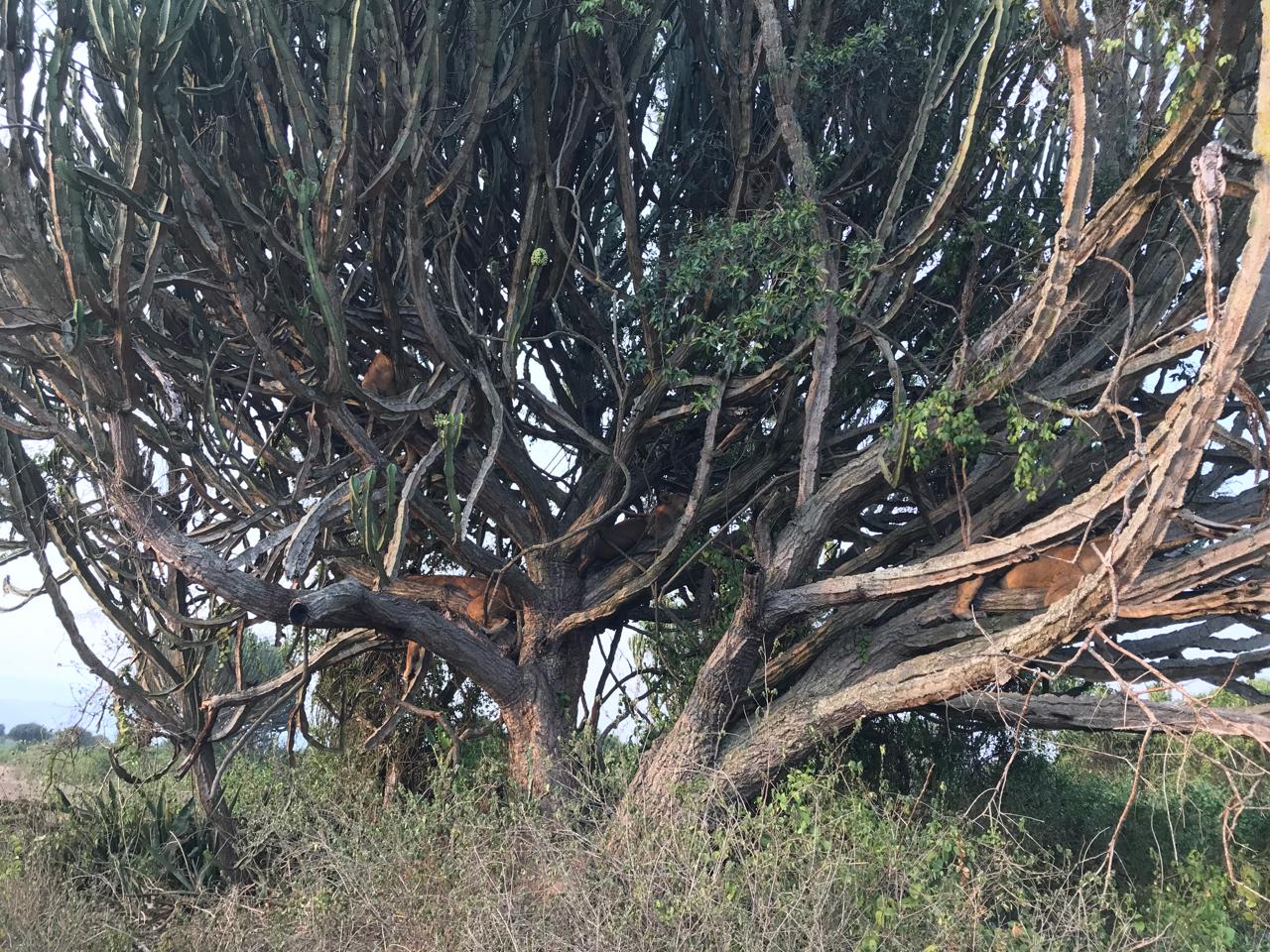Tracking lions in Uganda’s Queen Elizabeth National Park
Reporters join the wildlife authorities checking in on lions number in one of Uganda’s most-visited national parks

Your support helps us to tell the story
From reproductive rights to climate change to Big Tech, The Independent is on the ground when the story is developing. Whether it's investigating the financials of Elon Musk's pro-Trump PAC or producing our latest documentary, 'The A Word', which shines a light on the American women fighting for reproductive rights, we know how important it is to parse out the facts from the messaging.
At such a critical moment in US history, we need reporters on the ground. Your donation allows us to keep sending journalists to speak to both sides of the story.
The Independent is trusted by Americans across the entire political spectrum. And unlike many other quality news outlets, we choose not to lock Americans out of our reporting and analysis with paywalls. We believe quality journalism should be available to everyone, paid for by those who can afford it.
Your support makes all the difference.By Ronald Musoke for The Independent in Uganda
Lions are a must-see in Queen Elizabeth National Park in western Uganda and yet their reclusive nature sometimes makes it a frustrating experience for visitors. On a recent conservation study tour to the park, almost everyone in my group admitted to never having seen a lion in the wild.
As we embarked on our game drive in the late afternoon, after a chat with Edward Asalu, the Chief Warden of the park, we reiterated our collective frustration.
Asalu did not promise anything to the group but made a phone call from his office at Katunguru in the north of the park. Within minutes, a youthful ranger joined us.
Armed with a rifle, Innocent Turyamuha got into our emerald green safari van and just ahead of us was Jimmy Kisembo, another park ranger on motorbike. With a rifle slung across his chest, Kisembo would guide us on the late-afternoon game drive.
Driving on a flat narrow murram road, Kisembo led us to the northern plains of the park; only allowing us short stops to view buffaloes swirling in a pool of mud, kobs rummaging on patches of dry grass and waterbucks cooling off under tree shades.
About 45 minutes later, Kisembo beckoned us to stop and without uttering a word, he pointed us to a thicket under which a juvenile lion lay beside a severed head of a buffalo, its shredded hide and other entrails.
We gasped and sighed with both awe and excitement. We clicked away our cameras and yet the young lion seemed unbothered by our curiosity.
Just metres away, Kisembo found the bigger group of five perched onto the knotty branches of a candelabra euphorbia tree.
The day had been a hot one even for us humans but we were told it is normal for lions to take a siesta after feasting on prey. Hours earlier, the lions had just finished devouring a big mature buffalo that probably weighed over 200kg. But we were also surprised by their heavy panting.
“Lions feed at the top-most level of the food chain and that requires a lot of energy to digest the steak,” Turyamuha said, “But also, their high panting rate is due to lack of sweat glands; their sweat glands are only localized around the mouth and their paws.”
It is not clear why lions in this park climb trees but Turyamuha suggests it is probably due to global warming.
“These animals are quite sensitive to the environment,” he says, “It is possible a warming world has made the ground a little hotter and therefore uncomfortable for the lions which spend a lot of time resting.”
“Climbing up and resting in the branches helps them cool off,” he adds.
As our safari guide, Ismael Katamba, moved the car around for us to observe the cats at close quarters, we noticed one with a collar similar to one you would see round the neck of a well-fed pet dog. That’s when Turyamuha began telling us why it is not unusual these days to see some lions in the Queen Elizabeth Park with what he calls “radio collars.”
“The collars have batteries and are electronically configured to certain frequencies with which the park rangers use the GPS system to track the lions,” he said.
“Every morning we ensure that we get to find out where they are. We cannot be sure we will find them in the same place tomorrow because lions range a lot.”
Turyamuha explains that in an area of low prey density, lions can range within 40 sq km and where the animals of prey are even fewer; the lions can expand their territorial range as big as 400 sq km.
“In an area that has got patches of human settlements, that would be dangerous for both people and lions because the animals are not able to tell where the park boundaries stop,” he said.
“By using the radio tracking devices, we follow them every day; like today, yesterday and tomorrow, we will be able to know where every other group is located with respect to the distance from the community land where they can face challenges.”

This article is reproduced here as part of the Giants Club African Conservation Journalism Fellowships, a programme of the charity Space for Giants and supported by the owner of ESI Media, which includes independent.co.uk. It aims to expand the reach of conservation and environmental journalism in Africa, and bring more African voices into the international conservation debate. Read the original story here.
Join our commenting forum
Join thought-provoking conversations, follow other Independent readers and see their replies
Comments